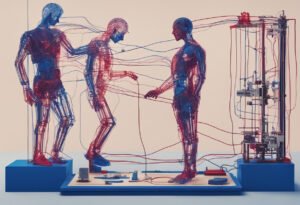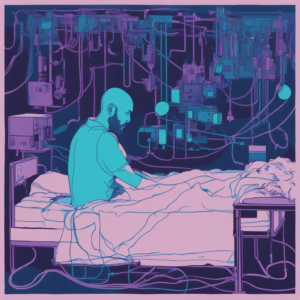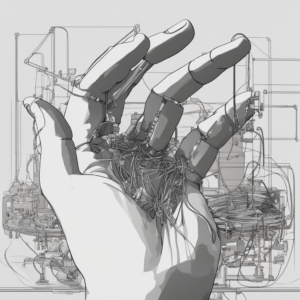In the realm of creative pursuits, we often find ourselves immersed in a world of self-expression and imagination. But what if the very essence of your creative identity were gradually slipping away, much like trying to paint a masterpiece with shaky hands? The challenges we all must face and acknowledge is a call to redefine our creative path.
I’m currently working on developing my creative practice while tangling with Parkinson’s Disease the first step is admitting to myself that I have it. There’s a process of grieving what was lost, and as with the “stages of grief” it’s common to encounter the barrier of denial. As we try to address our new situation and self through our art it’s appealing to hide from reality in a creative denial.
I have a neurodegenerative disease which causes progressive disability. I’m losing my dexterity, I have constant tremors (currently suppressed by drugs), and there are mental and emotional symptoms too. The problem of course is that I’m trying to find new ways of working while also being kicked in the arse. Like trying to paint a picture which accurately reflects life with shaky hands. It’s a “catch 22”
In Parkinson’s disease, the braincells which produce dopamine degenerate and die off, which leads to a significant reduction in dopamine levels. Dopamine is one of the “fun” chemicals in your body. It plays a key role in the brain’s reward system and influences motivation and pleasure, and it also helps regulate movement. Dopamine is sometimes referred to as the “feel-good” neurotransmitter because of its involvement in feelings of reward and pleasure. Consequently I don’t feel as much pleasure, or reward from doing “fun”, I chemically lack both motivation and satisfaction.
In the context of Parkinson’s disease, the lack of dopamine leads to the characteristic motor symptoms such as tremors, stiffness, and difficulty with movement. That means when I instinctively reach out to my equipment to play a keyboard or trigger a beat … it probably wont happen. Or it will happen horribly out of time, or the wrong pitch. Naturally that’s very annoying but also – think about your own personal self-definitions. I’ve always been a creative person. I studied art in college, I can intuitively sculpt in clay, paint, draw and make music. I’ve always simply expected to be able to gesturally create what’s in my mind, and now that instinctive immediacy is gone. So I’m exploring the idea of the self-definition, the forced erosion of self-image.
It’s something we will all face, either directly personally or in someone we love. It’s a very human thing, we are able to consider our own mortality but also our own decline. So while I’m researching various robotic and telepresence technologies I’m also looking into ways of exploring our sense of self.
Amidst the challenges, there is an undeniable beauty in this exploration of self, encapsulated by the relentless search for innovative solutions. The quest to harness robotic and telepresence technologies becomes a beacon of hope, as our protagonist seeks to bridge the gap between their creative spirit and the limitations imposed by Parkinson’s.
Self-discovery, even in the face of adversity, can be a remarkable testament to the resilience of the human spirit and it invites us to reflect on our own creative identities, self-definitions, and the inevitable changes that life will bring, reminding us that, in the end, we are all explorers of our own sense of self.





